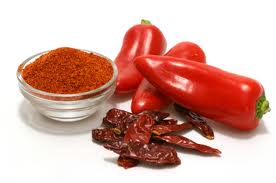 Cayenne pepper, native to the New World, is an ancient spice which has been consumed for more than 7,000 years. Starting as a wild plant, the pepper was dried in sunlight then ground into a powder, where it was a favorite among the Aztecs and Incans. Also known as Capsicum, this pepper can have quite a spicy punch if not used in moderation. With this said, it was widely used in the ancient cuisines of the Americas, where it was known to bring comfort to the stomach when added to most foods.
Cayenne pepper, native to the New World, is an ancient spice which has been consumed for more than 7,000 years. Starting as a wild plant, the pepper was dried in sunlight then ground into a powder, where it was a favorite among the Aztecs and Incans. Also known as Capsicum, this pepper can have quite a spicy punch if not used in moderation. With this said, it was widely used in the ancient cuisines of the Americas, where it was known to bring comfort to the stomach when added to most foods.
Columbus understood the importance and power of cayenne, and brought it back to Europe when returning from the New World. Here, it quickly made its way to Asia, where it remains an important crop and spice to this day.
Key Nutrients
Cayenne includes a high amount of fiber, capsaicin and flavonoids. Flavonoids are a class of molecules which are high in antioxidant content.
Health Benefits
Dietary Fiber – Dietary Fiber stimulates digestion and peristalsis, helping to relieve indigestion and constipation problems.
Flavonoids – Flavonoids are a class of antioxidants which help to promote healthy cell growth and reduce inflammation. They are also a powerful class of molecules when it comes to reducing the risk of certain cancers.
Season
Cayenne can be found in any supermarket year round.
Nutrition Information
Per 1 teaspoon (1.8 grams):
Calories (cKal): 6
Protein (grams): .22
Total Fat (grams): .31
Carbohydrates (grams): 1.02
Fiber (grams): .5
Buying and Storing
Cinnamon is typically bought in a sealed container, so there are no issues in terms of buying. When storing, make sure to keep in a sealed container, and store for up to six months.
Best Way to Add to Diet
Cayenne pepper works well in most recipes, just make sure to add a small amount, since large doses can be quite spicy. Cayenne works very well in soups, stews and stir fry’s.
Cayenne Recipe
Cayenne Spiced Pasta Salad

 Not Sure What Healthy Foods To Eat?
Not Sure What Healthy Foods To Eat? This week we take a look at one of my favorite healthy foods...the mighty Avocado.
This week we take a look at one of my favorite healthy foods...the mighty Avocado.
No comments yet.